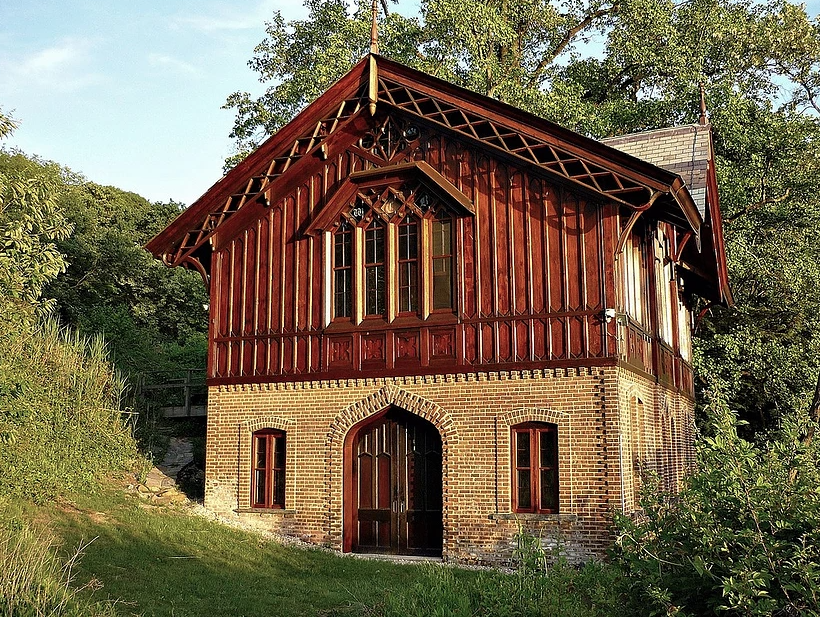A mill at one of the North Shore’s most prominent historical properties will return to operation in the fall.
The Cedarmere Museum and the Friends of Cedarmere, which preserves the Roslyn Harbor estate of 19th century newspaper editor, poet and civic leader William Cullen Bryant, announced this week that a series of grants would enable the mill, built in 1862, to be restored to working condition.
“According our plans, Bryant’s 1862 mill will once again be operational this fall, powering some of its original machinery and tools,” according to Tom Powell, vice president of the Friends of Cedarmere, who is overseeing the restoration effort.
Bryant reportedly built the mill, which was designed by Roslyn architect, artist, sanitary engineer and inventor Frederick S. Copley, in 1862, more than a decade after a fire destroyed Cedarmere’s first mill in 1849. It powered Bryant’s personal workshop, with tools such as lathes, grindstones, saws and grain-milling machines, and served as a pumping system to provide water to his property.
With a picturesque Gothic Revival style and a summer cottage on the upper level, the mill is thought to be the only surviving structure of its kind in the United States by the Friends of Cedarmere.
In order to restore the mill to working order, a water control gate will be installed and a 53-foot-long white oak sluiceway will carry water from the 18th century pond to a waterwheel that will be installed next to the mill. The gate and wheel will be constructed in the style of those from the same era, and will be designed by the restoration firm B.E. Hassett Mill-Wrights of Louisville, Kentucky.
The building’s foundation as well as the machinery in the building are also being restored, the structure’s electrical service is being updated, and an existing fireplace mantel and the interior woodwork and brickwork are being restored.
The project was funded with a $147,000 grant from the Robert David Lion Gardiner Foundation and $130,000 from the Nassau County Environmental Bond Act, as well as an undisclosed number of private donations.
Nassau County Legislator Delia DeRiggi-Whitton helped obtain the grant from the county.
“Thanks to the combined efforts of the Friends of Cedermere and the County, we are making it possible for this beautiful and historic mill to be preserved for the enjoyment of future generations,” DeRiggi-Whitton said in a statement.
John Dawson, president of the Friends of Cedarmere, said in a statement that he hoped the project would attract visitors to the estate.
“To achieve the complete restoration of the Mill, both inside and out, will attract many old and new visitors to Cedarmere, to watch the waterwheel function and view the original equipment in the interior driven by it,” Dawson said. “This should broaden the support of the Friends of Cedarmere in its mission to preserve and educate the public on the life and times of William Cullen Bryant.”



